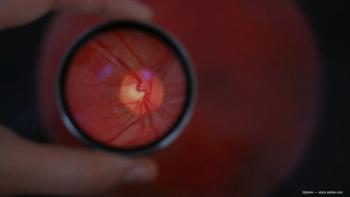
Spectacles saved our republic
Sometimes, we ophthalmologists-accustomed as we are to high-success rates with our therapeutic interventions-become inured to the impact our efforts can have on patients’ lives.
Sometimes, we ophthalmologists-accustomed as we are to high-success rates with our therapeutic interventions-become inured to the impact our efforts can have on patients’ lives.
I was reminded of this while reading, “Washington: A Life,” by Ron Chernow. Chernow achieved fame more recently when his biography of Alexander Hamilton was turned into a rap music-filled, eponymous Broadway show whose tickets sell for a modest $1 million apiece.
The history of our founding fathers is a remarkable and complicated one. If anyone thinks today’s politics are uniquely partisan or vitriolic, they have not read Chernow’s two books.
Rebellion and mutiny
An exciting vignette in the biography of President George Washington relates to a series of mutinies that took place toward the end of the Revolutionary War. Unpaid and underfed militia members from the various rebellious states decided to challenge the Continental Congress and turn their arms on the founding fathers assembled in Philadelphia.
They were allegedly egged on by citizens who were owed large debts in the form of bonds issued by the underfunded Congress. Congress had been unresponsive to many entreaties to address the soldiers’ pay that was many months in arrears, and the debt holders would support the mutineers so that both could get paid.
By many accounts, there was a real risk of a military overthrow of the civilian government and either devolution into chaos or the emergence of a military ruler.
While this was going on, the 51-year-old Washington was under tremendous stress trying to keep the army together and bring the war with England to a successful conclusion.
He was having difficulty reading his papers and maps, and asked David Rittenhouse, an astronomer and optical expert, to create for him a pair of reading glasses.
“Little did Rittenhouse know, as he fashioned these spectacles,” says Chernow, “that they would soon serve as a key prop in one of the most emotionally charged scenes in American history.”
Washington learned that a group of his officers had called for a secret meeting to plan the coup details. While sympathetic to the soldiers who had not been paid, he considered mutiny to be the height of dishonor for a soldier. He therefore called his own meeting to upbraid the would-be conspirators.
Their general pleaded with his officers to oppose any man “who wickedly attempts to open the floodgates of civil discord and deluge our empire in blood.” He asked them to entrust Congress with more time to address their concerns, and began reading to them a letter from a sympathetic congressman.
Having difficulty reading the words, Washington shocked his younger fellow officers by pulling out his pair of reading glasses-something they had never witnessed before.
“Gentlemen, you must pardon me,” he said. “I have grown gray in your service and now find myself growing blind.”
According to Chernow, “the disarming gesture of putting on the glasses moved the officers to tears as they recalled the legendary sacrifices he had made for his country. The threat of a military takeover had been averted by Washington’s succinct, but brilliant, well-timed oratory.”
Another item of interest to ophthalmologists is the mention that one of Washington’s portraits, by Joseph Wright, documents “an important quirk of Washington’s face: the lazy right eye that slid off into the corner while the left eye stared straight ahead.”
Many artists who depicted our first president decided not to reveal his strabismus, as they presumably believed their art should depict the heroic figure without evidence of physical flaw.
Reference
Chernow R. Washington: A Life. New York: Penguin, 2010. pp. 432, 435, 509.
Newsletter
Don’t miss out—get Ophthalmology Times updates on the latest clinical advancements and expert interviews, straight to your inbox.








































